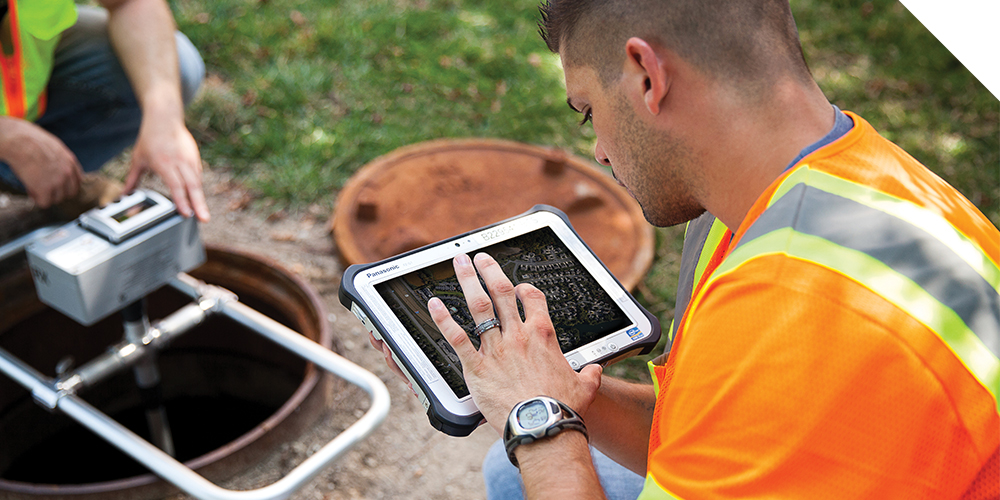FEASIBLE TASKS AND INNOVATIVE TOOLS PROVIDE SOLUTIONS TO STORMWATER COMPLIANCE AND COMPLAINTS
Sensible BMPs and ArcGIS-based stormwater tools washed away inefficiencies, leaving behind systematized processes.
✖
READ Case Study
✖
Send Us a Note
PROJECT STATS
Client
City of Grandview, Missouri
Public Works
Location
Grandview, Missouri
PROJECT COST
MS4 Support Services:
$80,000
Stormwater Tool Development: $100,000
Contract Total Value:
$180,000
COMPLETION DATE FOR BOTH PROJECTS
December 2018
CHALLENGE
In 2016, the Missouri Department of Natural Resources (MDNR) issued new state operating permits for stormwater management. Though these updates didn’t introduce major changes, they did require cities to follow the necessary protocols to remain compliant.
In a routine yet random inspection in late 2017, MDNR found the City of Grandview, Missouri, was no longer compliant with its municipal separate storm sewer (MS4) requirements. The identified violations pertained to illicit discharge detection, elimination minimum control, and the good housekeeping minimum control for Grandview’s public works maintenance facility. With these findings, MDNR issued a letter of warning, requiring a plan that would bring the city back into compliance.
While wading through permitting issues, the city also was highly focused on updating its stormwater master plan, and for good reason. In summer 2017, the city was hit hard with consecutive periods of significant rainfall that caused severe flooding along the Little Blue River. Because of the direct impact to residents, the city knew it needed a modern plan that could better communicate how stormwater moves through the city. In the past, typical master plans have involved a project list to be built over a period of time. Most of these projects, however, are not built due to lack of funding.
SOLUTION
For MS4 compliance support, Grandview hired our team to evaluate best management practices (BMPs) for each minimum control measure, then come up with a resolution for each that city staff could feasibly and financially implement.
SOLUTION
For MS4 compliance support, Grandview hired our team to evaluate best management practices (BMPs) for each minimum control measure, then come up with a resolution for each that city staff could feasibly and financially implement.
“There isn’t a cookie-cutter, one-size-fits-all approach,” says Lauren Grubbs, lead engineer. “We wanted to give the city a realistic plan that catered to its staff’s availability and timeline. Instead of creating more responsibilities for the city, we delved into all the activities that they were already implementing that could also count toward their MS4 goals.”
Based on the assessment, our team updated the city’s stormwater management program plan with reasonable BMPs — and within an aggressive timeline — and compiled documentation on the city’s existing activities and practices that support its MS4 goals. Next, training was held to educate staff on identifying and documenting relevant tasks and metrics that demonstrate the city’s ongoing effort to resolve compliance issues.
To meet the conditions of the good housekeeping minimum control measure, we conducted a detailed stormwater inspection and analysis of the city’s public works maintenance facility. From that, we developed a facility stormwater runoff management plan that outlined specific responsibilities, in a monthly inspection checklist format, for each of the four city departments using the facility. The plan, specific to the site, also included training for facility staff on the proper storage of equipment and materials to better protect the city’s streams.
Documentation for these plans is accessible via a digital file and hard-copy binder, allowing staff members to easily make updates as well as compile information for the city’s annual report.
Expanding on the regulatory base of the stormwater management program plan, our team also was tasked with refining the city’s stormwater master plan. Its original plan had served its purpose, with many of the defined projects constructed over a 20-year period.

Instead of developing the traditional capital project list, which would require significant funding, our team took the master plan in a different direction. In conjunction with TREKK Design Group, we developed a suite of tools that provide real-time analysis of stormwater issues using current city data. Among these tools are hydrologic and hydraulic calculations and parameters for delineated watersheds, major overland flow paths, flow path obstructions and drainage service request layers. The tool set, developed in a geodatabase framework, is compatible on a multitude of platforms, including Esri’s ArcMap, Google Earth and ArcOnline dashboard. Though Grandview already had an ArcGIS Online account, its use of the software was fairly limited.
Layering these tools together paints a picture of how water moves through the city, allowing city engineers to not only know there’s a potential drainage problem but also begin to understand the source of that problem. These tools identify locations of current drainage issues, visually showing where the issue is located with respect to major overland flow paths and obstructions to that flow path. Engineers also can see how much area (acres) is draining to that point and how much stormwater (cubic feet per second) is anticipated during various storm events.
Additionally, these tools can determine if existing pipes meet the minimum level of service per current regional design standards, as well as estimate the pipe capacity needed for future development. With the right tools in an easy-to-navigate dashboard, the city can better manage stormwater on a day-to-day basis and more accurately address drainage complaints with the public.
RESULTS
In December 2018, our team provided a fourth-quarter update to MDNR on behalf of Grandview, with proof that the city had taken corrective action, as promised. MDNR agreed, and the city is now fully back in compliance. Open communication with MDNR and staff members helped generate a solid game plan, within a nine-month time frame, to address compliance issues.
That same month, we also handed over the new stormwater tools to the city, which staff members started using the same day. This new master “plan” sets the stage for the future of stormwater management in Grandview, providing technical and communication tools for everyday use. This work will save the city time in responding to drainage complaints, reviewing development plans and preparing the MS4 report.





